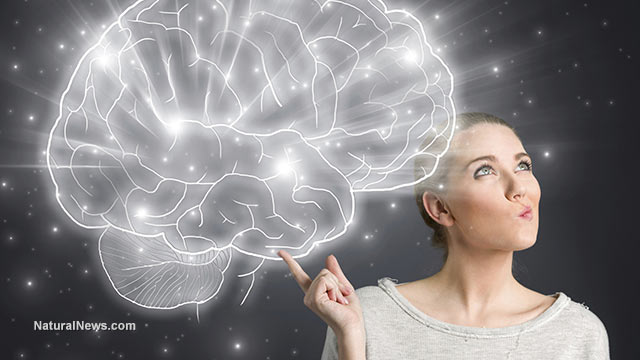What could go wrong? These lab-grown “mini-brains” can’t think, but scientists say “cerebral organoids” can be used to study human brain function
02/13/2020 / By Lance D Johnson

Researchers from Kyoto University in Japan have developed functioning cerebral organoids. These mini-brains were artificially-grown from stem cells. These 3D tissue cultures are the first of their kind to contain functional neural networks. These cerebral organoids do not have sensory input and cannot “think” on their own; however, according to Japanese researchers, these artificial brains can be used to study human brain function.
“Because they can mimic cerebral development, cerebral organoids can be used as a substitute for the human brain to study complex developmental and neurological disorders,” says author Jun Takahashi, a professor at Kyoto University.
What could researchers get wrong? How can researchers accurately make a novel psychiatric diagnosis in humans by merely comparing neural networks in isolated organoids? Human brain function is far more complex and interconnected to emotions and other systems of the body.
Psychiatric research arrogantly disregards interconnected body systems and the whole experience of the conscious human being
The 3D stem cell structures are not conscious and contain no sensory input or output. The organoids cannot process emotions and do not depend on oxygen and other nutrients in order to function. The organoids do not contain supporting tissues and blood vessels. They are not connected to the whole body of a human being. This is the problem with modern medical science. Each organ is treated as a separate entity; the whole person and his/her interconnected body systems are ignored. Nutritional and emotional input is disregarded. Medical science fails to adopt a more holistic approach and therefore does not understand the body’s true capacity to heal.
The 3D organoids were created from a ball of puripotent stem cells. These cells were cultured in an environment that supports cerebral development. The researchers created a functional analysis tool that can detect changes in neural activity per 1,000 cells. For instance, they were able to detect changes in calcium ion activity within a detected field. They were able to trace connections between individual neurons and observe synchronized activity in neural networks.
The researchers believe synchronized neural activity in the organoid can become a basis for research into general brain functions, such as studying human memory. They also believe this organoid gives them the basis from which they can understand psychiatric disorders.
“We believe that our work introduces the possibility of a broad assessment of human cell-derived neural activity,” says study author Hideya Sakaguchi, a postdoctoral fellow at Kyoto University. “The method could help researchers understand processes by which information is encoded in the brain through the activity of specific cell populations, as well as the fundamental mechanisms underlying psychiatric diseases.”
The researchers hope to use the organoids to model neuro-psychiatric disorders and develop new drugs that target activities of neural networks. This kind of research will definitely be faulty and shortsighted because it forgoes the presence and role of interconnected body systems and the whole experience of the conscious human being.
Have the researchers created a vehicle to advance artificial intelligence?
Sakaguchi sees greater potential for these artificial organoids and responded to ethical questions about the ability to develop a “thinking” brain that can develop a sense of consciousness. “Because cerebral organoids mimic the developmental process, a concern is that they also have mental activities such as consciousness in the future,” Sakaguchi says. “Some people have referenced the famous ‘brains in a vat’ thought experiment proposed by Hilary Putnam, that brains placed in a vat of life-sustaining liquid with connection to a computer may have the same consciousness as human beings.”
“Consciousness requires subjective experience, and cerebral organoids without sensory tissues will not have sensory input and motor output,” he said. “However, if cerebral organoids with an input and output system develop consciousness requiring moral consideration, the basic and applied research of these cerebral organoids will become a tremendous ethical challenge.”
Could the cerebral organoids be potentially groomed in an environment that takes in information and processes it? Are these mini-brains the vehicle for future AI experiments? Will future AI be able to make moral judgments within artificial neural networks? Will these artificial mini-brains give AI a platform to think and be motivated by desires and ambitions of their own?
Sources include:
Tagged Under: AI, body systems, brain function, consciousness, dangerous tech, emotion, ethics, future tech, Holistic Approach, interconnected, Mental illness, Neural Networks, nutrients, psychiatric labels
RECENT NEWS & ARTICLES
COPYRIGHT © 2017 BRAIN NEWS


















